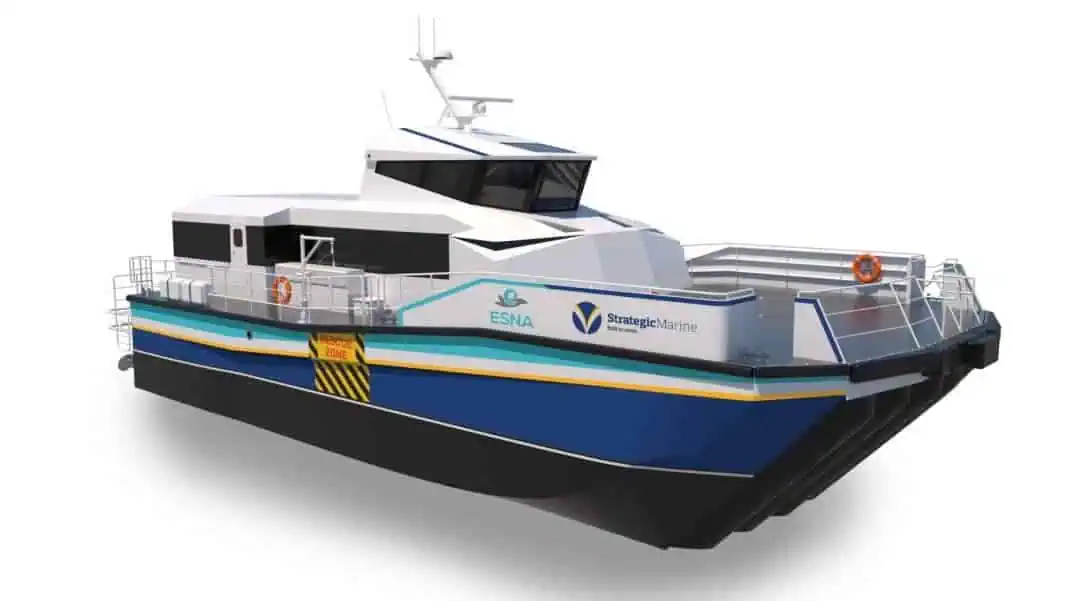ESNA and Strategic Marine are delighted to announce that they have signed an agreement to develop a SES CTV (Surface Effect Ship Crew Transfer Vessel) for offshore wind applications. The vessel type offers the combination of higher speed, increased operational wave height and reduced fuel consumption.
The plan is to start building the first offshore windfarm SES CTV during the fourth quarter of 2024.
The agreement is based on the parties’ experience in working together for three SES crew boats for oil and gas, due for completion this year. This newly inked agreement also foresees a greater level of collaborations between ESNA and Strategic Marine for the promotion of SES technology for various target markets, such as offshore wind, oil and gas and security and defence applications.
Strategic Marine has a long and established track record building CTVs for offshore wind with 36 vessels delivered since 2012. The SES experts in ESNA have worked for more than 40 years with the design, building, construction and operation of SES, and have a deep understanding of the offshore wind industry.
“We are delighted to formalize this agreement and look forward to continue working with ESNA in order to expand the portfolio of SES designs and offer vessels with this very exciting technology to a wider range of our customers.” Says Mr Eng Yew Chan, CEO at Strategic Marine.
“Strategic Marine was a natural choice for ESNA to team up with to further commercialize our technology and designs after having worked with them on other projects and experiencing first hand their excellent shipbuilding capabilities.” Says Mr Trygve Halvorsen Espeland, Naval Architect and Co-Founder of ESNA.
The SES concept for crew transport offers unique competitive advantages. The high speed ensures a shorter transit time and thus more time for work. The active SES motion damping system provides better seakeeping and higher passenger comfort than what is possible with conventional monohulls and catamarans. It is also used at the wind turbines to allow turbine transfers in higher wave heights. The low SES resistance offers fuel savings and reduced emissions in combination with the increased speed.
ESNA is supplying the vessel design package and an equipment package for the main SES systems. The SES equipment package simplifies the complexity during construction by fully replacing hydraulic systems with modular electrical systems. The fully automatic and modern SES control system enhances both energy efficiency and operational performance.












